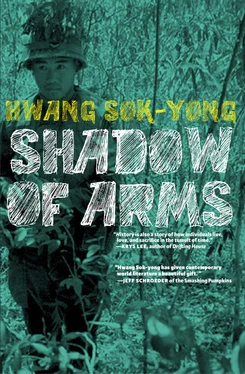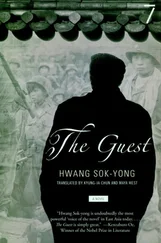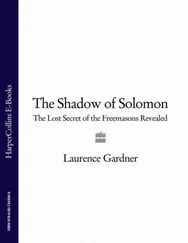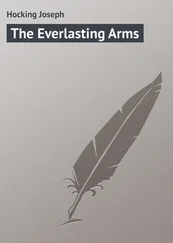Not only personnel, but also ammunition, explosives, and other war materiel were constantly being moved along the Ho Chi Minh Trail. In better times, the trail had been hectic with motor vehicles coming and going, but now each segment was set up as part of a secret relay network and supplies were moved by bicycles and small carts. Vehicles were still in use only on a few stretches where the road was still intact under the cover of thick jungle.
In the first phase of basic training, the urban guerrillas of the Second and Third Special Districts mainly concentrated on military tactics and use of weapons. They were taught a range of hit-and-run tactics and various methods of urban warfare. As for firearms, the instructors showed them how to shoot, disassemble, and take care of small arms such as pistols, carbines, and automatic weapons. They also became familiarized with enemy weapons and ammunitions and learned what was known as “guerrilla cookery,” namely, how to improvise homemade weapons, bombs, booby traps, and so forth. There were demonstrations on the fuse mechanisms of time bombs and they were taught how to make detonators for plastic explosives.
They picked up a few tricks especially useful for urban fighters. For instance, if you stick a live cartridge inside the tip of a fountain pen or a ballpoint pen and rig a firing pin to the coiled spring, it makes a wonderful weapon for killing someone facing you at close range. Another item, specifically designed for attacks on buildings or vehicles, was a “guinea pig cocktail.” A mixture of two parts gasoline to three parts motor oil in a throwable container with a cotton cloth wick. The density of the oil made the inflammatory gasoline stick to the target.
They were taught how to make bombs from the empty ration tins discarded by American soldiers. You stuffed it with nails and gunpowder, sealed it with tape and stuck a detonating pin through the top. For another common booby trap, tape a grenade to a gate where the target will emerge, then connect a tripwire to the grenade pin and string it just above the ground where feet will stumble over it. They were also shown how to disarm and reuse landmines and other bombs.
The training also included doctrines and rules for planning and executing operations. For example, they learned that urban guerrillas should always plan their own safe escape before embarking on an attack. The assault should be rehearsed and the target and scene carefully observed and confirmed two or three times before proceeding. Be inconspicuous. On the street, keep away from the curb. Avoid telephone contacts if possible. Never discuss politics. Have a job. Spend breaks reading quietly instead of drinking or playing games. Be wary of fellow workers. Arrange all meetings with a fallback procedure. Select the targets that are easiest, most accessible, and most concrete. The rules were so many and so detailed that it was impossible to remember them all.
The second phase of training was political education and propaganda tactics. Until the early sixties, all guerrillas received four to six months of special indoctrination in Suanmai near Hanoi or in Thanh Hóa in the south before being shipped to Binh to finish the course at Dong Hoi Military Camp. But as the American forces increased in strength and the NLF forces suffered greater losses, the length of training had been drastically shortened.
In the period from the start of training until the first infiltration mission, at least a quarter of their military strength was lost, mainly from air bombardment and diseases in the jungle. Small-scale camps for training guerrillas for the central Vietnam theater were now scattered throughout the highland jungle in the region of the Atwat Mountains. The trail guides were mostly local natives of the highland country. They led the troop contingents for about half a day and then turned them over to the next guide and returned to their base. In this way, communications passed quickly and each base point had an idea what was happening elsewhere through the comings and goings of the guides. Radio equipment was rare, so for signaling they made do with whistles and woodblocks.
Upon setting off on the march, each guerrilla trainee was issued a backpack with food for three days and a little first-aid kit. The backpacks were no more than rubber bags with cloth flaps. Their equipment consisted of two sets of black civilian clothing, a pair of Ho Chi Minh sandals, a sweater, a hammock with a mosquito net, a camouflage waterproof cape for the rain, one rifle, a hundred cartridges, and two hand grenades. But upon reaching their destination at the training camp, they had to turn in everything they’d been issued. Pham Minh’s group was scheduled for only a short march, so they had not been given any heavy equipment.
The sound of two wooden blocks striking together rang out. Pham Minh got up from the ground, his chest completely soaked. Through the leaves the sky looked torn into palm-sized patches. The jungle air was like steam inside a pressure cooker. Because of the humid heat and the malaria-bearing mosquitoes, after five days of marching along the trail there had to be a two-day rest. Pham Minh looked about at his comrades as they got to their feet and back into line. Nobody spoke. They’d been instructed to march in silence.
Upon receiving a hand signal from the point, the unit leader sent back the message, quietly ordering “March.”
Once again they started walking down the trail that was about ten feet in width. Each of the three units in their group had been given five heavily loaded bicycles they were responsible for delivering to the next point. By transporting these supplies as they relocated, the trainees were fulfilling a dual role. They were also resupplying the rural guerrillas with artillery — rockets, mortar shells, grenades, and landmines. As long as this supply line remained intact, there would be attacks every night. For each bicycle, three men took turns pushing.
There was a unit of men, wearing outfits like their own, coming down the trail towards them from the opposite direction. Judging from their red neckerchiefs, they must have been new NLF recruits, either in training or having just completed indoctrination. They looked worn-out and exhausted. One of them was being carried on a stretcher. Sick with malaria, probably. Most likely they would leave him with the medics at one of the rest camps. But that was only possible on the trail, and if you came down with malaria after you’ve infiltrated the enemy zone, you were more likely to be left to die. Down in the forests and up in the skies overhead there were American search-and-destroy units scanning the terrain.
They had passed beyond the end of the main trail after the midday meal and were descending down the endless south slope of the mountains. Laos was across the ridge. Before them a vast jungle was spread out with no trace of human habitation. The second-phase Atwat school was hidden in a valley along a stream. Nothing of it was visible from the air, but as they approached they could see a rather spacious clearing and under the jungle canopy a row of barracks with earthen walls and roofs of thatched palm fronds. There was also a solid-looking brick building with olive green walls and a roof camouflaged with foliage from banana and palm trees. It might have once been a plantation run by the French. There were rows of rubber trees along the stream.
After roll call the group had a late-afternoon dinner. The food there was better than in basic training. They were served canned fish, pork broth, and rice. Here they had a hospital, a reading room, and even a few recreation facilities for table tennis and volleyball. The trainees were assigned bunks in the barracks and issued textbooks that they were to study over the next four weeks.
The last group had finished training and departed two days earlier. The only sleeping gear they were given to use with the bamboo bunks was a single sheet. The ten women in their group were quartered separately in the main barracks. All the instructors were middle-aged NLF veterans. A few of them had been liberation fighters in the old days with the Viet Minh movement against the French. The political commissar in charge of their indoctrination was a North Vietnamese army regular, a lieutenant.
Читать дальше












